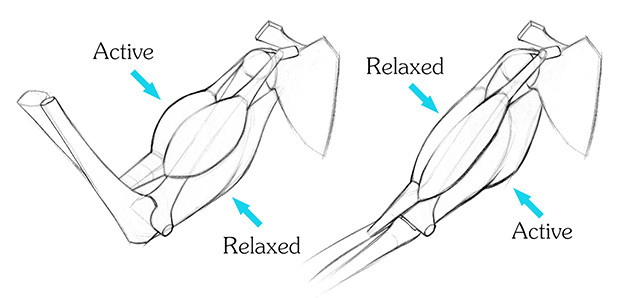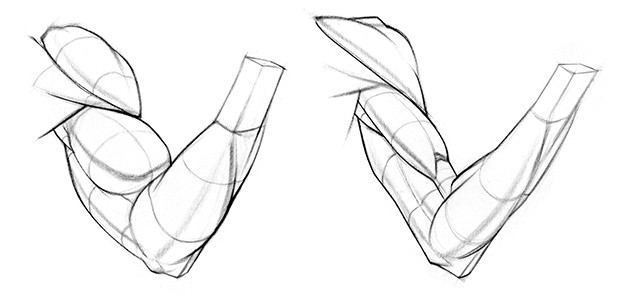Check out the Premium Anatomy course to see the full version of this video and all other Anatomy videos.
Drawing Muscles: What You Need to Know
We’re finally at the part of the course you’ve all been waiting for. Muscles! In this lesson, we’ll go over what you need to learn for each muscle, some general muscle anatomy, and the types of muscles.
Need-to-Know! or Things you Should Know
There’s a basic checklist of things we will learn about each muscle. This includes the muscle name, origin, insertion, function, antagonist, and form.
The name of the muscle is the least important thing to know about the muscle. Many artists you ask will say you don’t need to know the names at all. That’s partially true. It depends on how deep you want to learn anatomy. I got away without knowing the muscles until I started teaching it. But, knowing the name does have some benefits. Knowing the muscle name allows us to talk about anatomy.

I’ll give you tricks to help remember muscle names whenever I can. There’s usually some logic to the name that hints at the muscle’s location, function, or form. For example, the “Extensor digitorum muscle.” This is the muscle in your hand that extends, or straightens, your digits.
Where the muscle attaches is important to know as well. It helps us precisely and confidently map out the muscle. It also hints at the muscle’s function, as we’ll see in a minute. There’s two areas of attachment. The Origin is the attachment on the skeleton that is more stationary and closer to the center. The Insertion is the attachment on the farther and more moveable part of the body.
You should also know the function, or what action each muscle is responsible for.

Fortunately, functions are pretty easy, because muscles can only do one thing... Contract. When you flex a muscle, it contracts, and pulls the insertion closer to the origin.
Muscles work in pairs. When one muscle contracts, its antagonist is stretched out. The bicep flexes the arm and the tricep extends the arm. In your drawings, try to exaggerate the hardness of the active muscle, and let the relaxed muscle conform to gravity. Being aware of the muscle’s function is essential for drawing the figure, so you know which muscles to flex and which to relax. It gets you away from drawing a “noun” and back to drawing a “verb,” and your poses will have greater animation and impact because of it. If you want to draw constipated super heros, then you can ignore what I just said.

A muscle’s name, attachments, and function can be summed up with just a few words. We’re artists. What we really need to study is the Shape and Form of the muscles. We have to understand the muscle in three dimensions, so we can draw its shape from all angles. This includes variations like stretched, relaxed, or flexed, and different body types. We’ll study the plane changes, the simplified forms, and other detailed awesomeness about the forms. It will help you invent figures from your imagination and make them anatomically accurate and dynamic.

If you’d like to learn about the 8 types of muscles found throughout the body, head on over to proko.com/anatomy. Get the premium anatomy course for access to the extended videos, 3d models, and more drawing demonstrations. Check it out!
